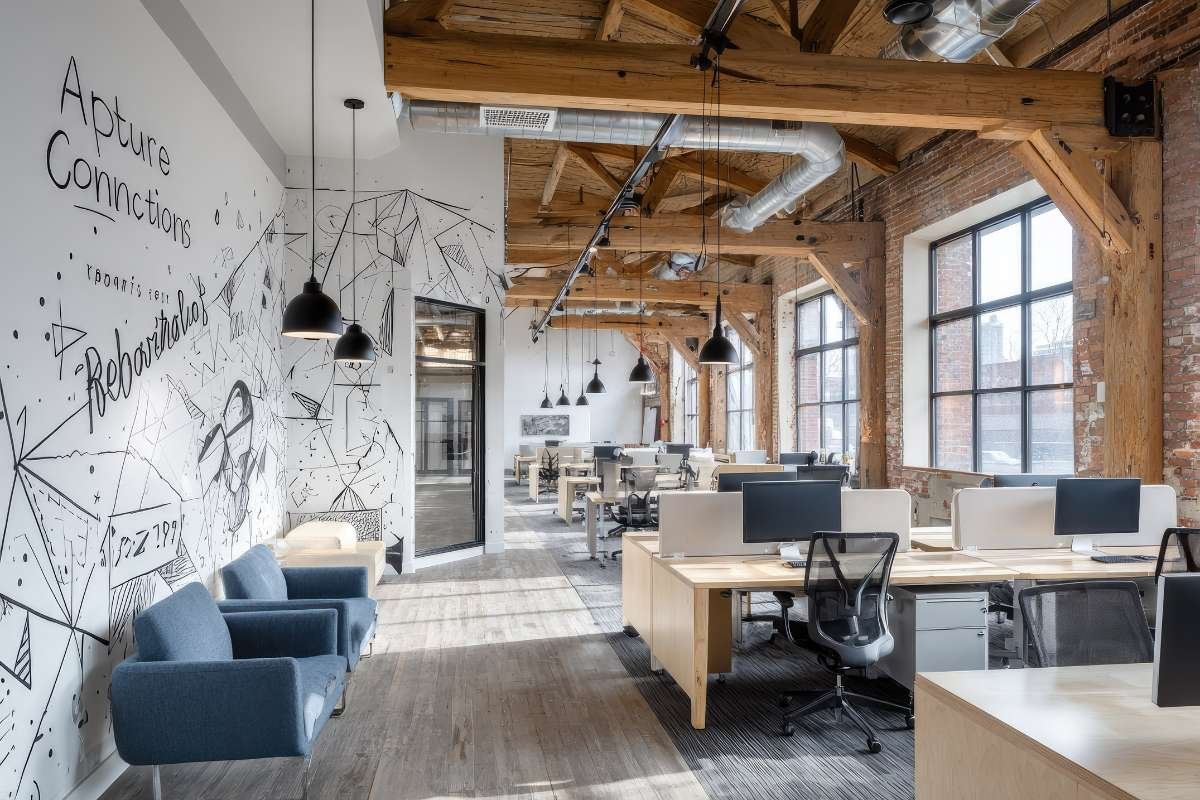Businesses across America are rapidly changing how they approach workplace comfort and productivity.
I’ve seen this trend gain momentum over the past several years, and the results are nothing short of extraordinary.
Companies that recognize the value of smart climate control systems are beginning to see tremendous return on investment in both employee satisfaction and the bottom line.
In fact, Smart HVAC controls are projected to reach $28.3 billion by 2025, an almost 3x increase from 2018.
The truth is, most businesses in the US are still operating with ancient AC systems that waste energy, anger employees, and cost a fortune to maintain.
The problem is, until now, there has been no clear roadmap on how to change this.
With the right commercial AC installation San Diego strategy in place, you can upgrade your workplace climate for a whole new generation of workers.
In this article, I’m going to take you through exactly what you need to know.
Here’s a preview of what we cover:
- Smart AC Systems Are Stealing the Show in Workplaces
- Productivity Isn’t Just Temperature – the Hidden Connection
- Smart AC Systems Cut Costs: Smart Ways to Save
- Climate-Controlled Workplaces of the Future
Smart AC Systems Are Stealing the Show in Workplaces
Okay, so you might think that a basic AC unit is a basic AC unit.
Think of old AC systems as an old car from the 1980s. They’ll take you from A to B, sure, but that’s about it.
Smart AC installations work differently because they are capable of learning from your workplace patterns.
Smart systems use sensors and artificial intelligence to automatically adjust temperature, humidity, and airflow according to:
- Occupancy levels throughout the day
- Weather conditions and seasonal changes
- Energy usage patterns to minimize waste
- Individual comfort preferences across different zones
Don’t believe me? Let’s go back to the car example for a second.
Your car can’t automatically turn on the heat in the winter and adjust the AC in the summer based on the current weather, can it?
So why should your workplace be stuck using an outdated AC system when smart installations can deliver the same benefits with added cost savings and value?
Productivity Isn’t Just Temperature – the Hidden Connection

Okay, hear me out on this one:
Air conditioning can improve employee productivity by at least 25% compared to non-climate-controlled workplaces. But here’s the kicker, it’s not just having AC that matters. It’s about having the right temperature at the right time.
Research shows that productivity is highest in office environments where temperatures are kept between 69.8°F and 71.6°F. When temperatures rise above 73.4°F, employee performance drops like a rock.
Guess what? Temperature isn’t the whole story though, modern smart AC systems also control:
- Humidity levels between 40-60% for optimal comfort
- Air quality using advanced filtration systems
- Airflow distribution to remove hot and cold spots
- Energy consumption during peak demand hours
Check out the data here. Studies have shown that for every degree above 77°F, workers experience a 2% decrease in productivity.
That doesn’t sound like much, right?
Hold on.
Okay, for a business with 50 employees, 2% equates to one full-time employee’s worth of output each and every day.
Not great.
Smart AC Systems Cut Costs: Smart Ways to Save
Want to hear something crazy?
IoT-connected HVAC units can reduce energy waste by as much as 30%. Yes, you read that right, thirty percent less energy consumption all while improving workplace comfort.
Smart AC installations pull off this trifecta of cost savings through some next-level features:
Predictive Maintenance
Ever wait until the hottest day of summer and have your AC unit completely die on you?
Smart AC units monitor themselves, so you know exactly when things need fixing before they break. From filter changes to refrigerant top-ups and detecting early signs of component wear.
The predictive maintenance market alone is forecast to grow from $10.6 billion in 2024 all the way up to $47.8 billion by 2029. Companies are finally waking up to the fact that prevention is much cheaper than fixing emergencies.
Zone-Based Climate Control
Why cool the entire office when only certain areas are occupied? Smart systems create multiple climate zones that can be individually controlled. Server rooms stay cool, and empty conference rooms coast at energy-saving temperatures.
Real-Time Energy Optimization
Smart thermostats and connected sensors learn building patterns, automatically adjusting to save energy during peak demand periods. Systems can integrate with utility companies to cut consumption when electricity rates are highest.
Advanced Air Quality Management
Smart AC systems don’t just cool air, they purify it. With UV-C technology that can remove up to 99.9% of airborne pathogens, these systems create healthier work environments while reducing sick days.
The Economics of Smart AC Installations

Okay, here’s the bottom line…
80% of office workers complain about workplace temperature, and on average workers waste 2% of office time dealing with temperature-related issues. That’s nearly an entire workday per year per worker.
At $1 million of payroll, that’s $20,000 per year lost to temperature-related issues.
Smart AC installations pay for themselves by:
- Reducing energy bills through optimized consumption patterns
- Cutting maintenance costs through predictive diagnostics
- Driving increased productivity from employee comfort
- Boosting property value from modern building systems
- Claiming tax incentives for energy-efficient equipment
The US Inflation Reduction Act introduced tax credits of up to $2,000 for qualifying heat pump systems, making such upgrades more attractive to forward-thinking businesses.
Which Smart AC Installation Strategy Is Right for You?
Not all smart AC systems are the same. When planning your workplace climate upgrade, consider these factors:
Size and Layout of the Building
Large open offices benefit from centralized smart systems with multiple zones. Small businesses might prefer individual smart mini-split units for their flexibility.
Integration Capabilities
The best smart AC systems integrate smoothly with existing building management systems and employee scheduling software. AC that automatically adjusts when meetings are scheduled, for example.
Remote Management Features
Remote work means modern business owners need systems they can monitor and control from anywhere. Look for platforms offering smartphone apps and detailed analytics reporting.
Climate-Controlled Workplaces of the Future

The workplaces of tomorrow will be characterized by intelligent systems that predict needs before they happen rather than responding to them in real-time.
Developments we’re seeing include:
- AI-powered comfort prediction models
- Smart systems integrated with renewable energy
- Energy-as-a-Service business models where businesses pay for usage rather than systems
Investing in smart AC installations today positions you as an employer of choice.
When talent has a choice between a sweltering office and a perfectly climate-controlled, next-gen smart workplace, which do you think they’ll pick?
Take Action on Your Smart AC Upgrade
Smart AC installations are no longer a luxury or a “nice-to-have”. They’re a business investment that will impact your employee retention, energy bills, and property values.
Stop waiting until your current system fails in the middle of the hottest day of summer.
Start planning and budgeting for your workplace upgrade now, and you’ll be shocked at how it changes the way people perceive your business.
Businesses that move with this trend will jump to a massive competitive advantage over those stuck using ancient climate control systems.
Time to Make The Switch
Smart AC installations represent the perfect marriage of employee comfort, environmental responsibility, and business profitability.
With the market exploding, there’s never been a better time to future-proof your workplace.
Competitors are making these investments.
Employees are silently begging for better climate control.
Energy bills are through the roof.
What are you waiting for?


















